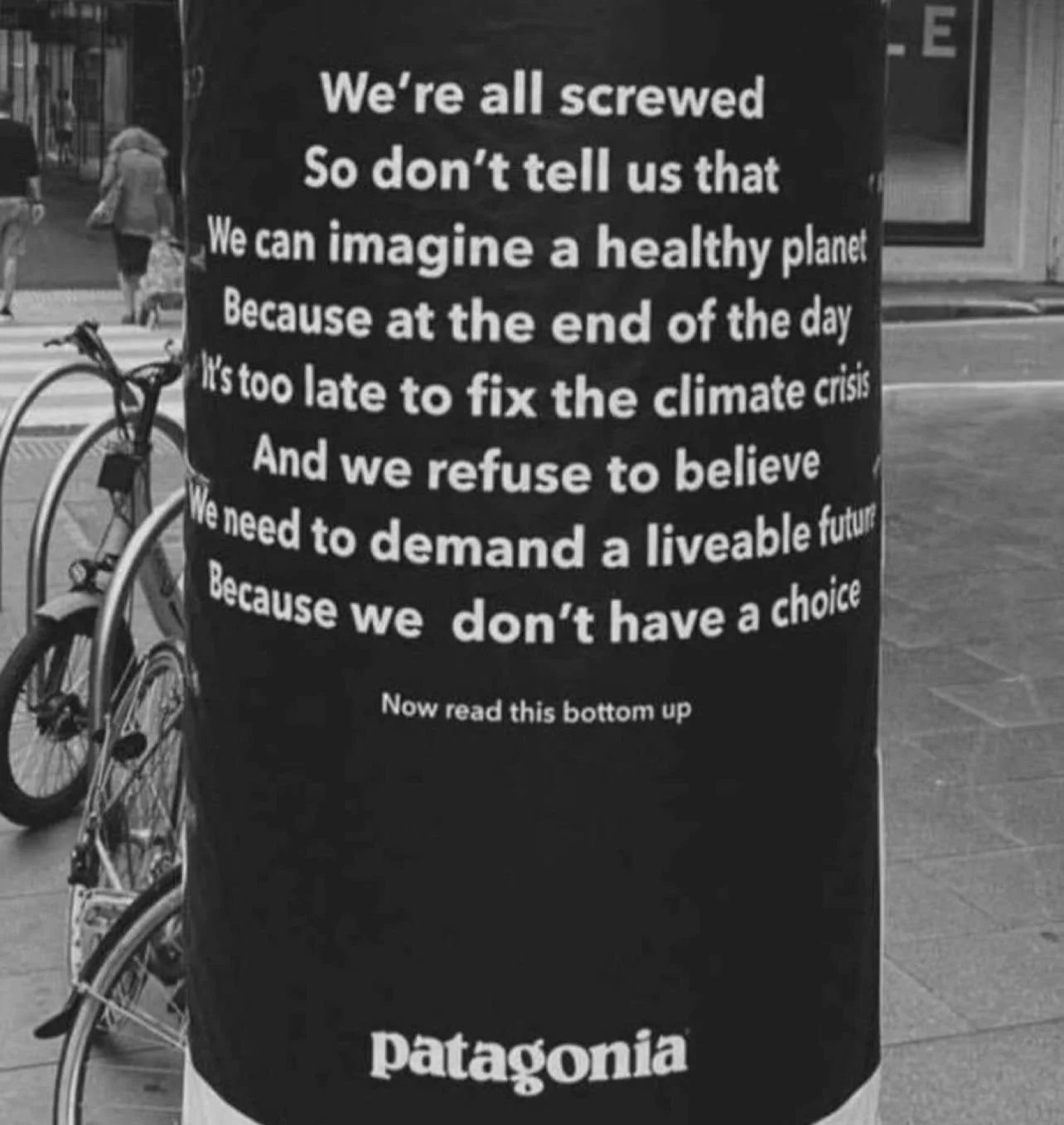Marketing “outside the box”
“I am looking for something with the X-Factor”, “Bring me something outside the box.”
These phrases are often thrown around in creative briefs, but what does outside the box even mean in advertising? And how can you achieve it?
The definition of ‘outside the box’ in advertising constantly redefines itself. So, looking at it as a way of standing out from the crowd and doing something different while staying aligned with your brand is best.
Conventional marketing techniques can sometimes blur into a monotonous haze in a world saturated with brands vying for consumers' attention. That’s where the concept of outside-the-box marketing emerges as the game changer. It’s not just about being different; it’s about being unforgettable in a way that resonates, engages, and compels the audience to action.
Outside-the-box marketing begins with a fundamental shift in perspective. Instead of viewing marketing solely as a means of conveying information about a product or service, this approach sees it as an opportunity to create an experience or tell a story. For instance, Red Bull doesn't just sell energy drinks; they sponsor extreme sports events, positioning their brand at the forefront of high-adrenaline experiences.
Despite clients thinking they want something “outside the box,” when faced with a campaign so different it constitutes falling outside the box, they often become afraid and decide that would prefer to “stay in the box, thank you very much!”
You shouldn’t be afraid to think outside the box. Thinking outside the box can be a great way to get attention and increase market share.
Let’s look at a few case studies to best explain the term and also exemplify the benefit of “thinking differently” in your marketing campaigns.
VOLVO HIGHJACKS THE SUPERBOWL
The Superbowl is the biggest media day of the year in America, and car companies spend over $60 million on Superbowl ads. In 2015, one car company spent $0.00 and raised sales 70.7%. WE, the creative agency behind this Volvo campaign, thought outside the box on a grand scale.
Volvo told consumers that they would be giving away a car, all you had to do to enter into the competition to win this car was watch the Superbowl ads. Anytime consumers saw a car ad (for any other brand), they were advised to tweet using the hashtag #volvocontest. This put them in the draw to win a brand-new Volvo. On the day of the Superbowl, there were 50,339 tweets in total, and every time a car commercial played for another brand, these tweets spiked (www.we-worldwide.com, 2020).
THE NZTA ON SNAP CHAT
In 2014 The New Zealand Transport Agency and Clemenger BBDO, Wellington, created: Tinnyvision- A group of guys Snap Chatting their stoner sessions. The campaign aimed to deter Stoners from driving as they react slower when under the influence. In a world first, the NZTA used Snapchat as a medium.
In this campaign, a group of guys starts sharing their stoner experiences on the Tinnyvision Snapchat account. The target market, stoners, are entertained and amused by their antics and want to keep watching. The stoners do funny things with the smoke and goof around with each other in a very Kiwi way. The filming is shaky and looks like it was filmed on a phone. As word spread of this hilarious account, 7,500 New Zealanders added Tinnyvision on Snapchat. Eleven snaps in, the boys go for a drive to get some food (presumably, they have the munchies).
They discuss how many burgers they will eat as they approach a pedestrian crossing where a woman is crossing.
They see her, but their reaction time is too slow, and the car stops with a thud. The phone shot footage pans to the windscreen, which you can see has been cracked by the woman's body. The people following Tinnyvision's snap had no idea if what they had seen was real, but because it had disappeared as Snapchats do, they could not view it again. A few minutes later, the followers received a message saying, "Stoned drivers are slower to react". The campaign used Snapchat as a medium to target those likely to smoke weed and drive and enticed them in on the media sites they hung out on. Some of these included: Mai FM, Flava, Game Planet and Reddit.
BURGER WARS
Burger King’s creative agency BBH thought outside the box when they placed one of their competitor, McDonald's, burgers in every single ad they made for the year. At the end of 2019, BBH and Burger King revealed that in every advertisement that year they had placed a Big Mac behind the Whopper. The fact that the public had not noticed was a cheeky way to prove that the Big Mac was smaller than the Whopper.
With their' Burn that ad' campaign, Burger King did it again in 2019. This campaign allowed consumers to burn their competitors' ads using an app when they came across them. In return for setting alight a competitor’s advertisement, they were rewarded a free whopper.
DARE DR SAM
In his best-selling novel ‘Unfair Fight’ Sam Hazledine describes how he used outside-the-box marketing techniques to grow his business Medrecruit into Australiasia's largest recruitment company. Hazledine set up a YouTube channel to reach his target market of junior doctors. On this channel, Dare Dr Sam, the doctors could vote for which outrageous stunt Hazledine would perform. This resulted in him water skiing in a G-string, riding a push bike into a lake dressed as a chicken, and going to the supermarket in a mankini. This is a great example of how creative marketing can be used to grab attention and grow a brand without costing a lot of money. In Unfair Fight, Hazledine attributes some of his initial business growth to these courageous marketing stunts. Dare Dr Sam shows that outside-the-box marketing is not only for high-budget businesses with agencies in tow. Small businesses can use it to stand out when they find themselves in the shoes of David, facing off with the Goliaths of the world. I recommend this book if you want further insights into getting a winning advantage for your small business.
Hopefully, these case studies have got you thinking about some outside-the-box ways to promote your business. It doesn’t have to cost a lot of money. It must align with your brand values, connect with your audience, and distinguish your brand from competitors. Here are some ways to apply the techniques employed in the above case studies to your business.
Be cheeky
Like Volvo did when it high-jacked the Super Bowl think of ways you can cheekily outwit your competitors. You could use social media for a low-budget version of Burger King’s ‘burn that ad’ app. For example, say you were a Pizza store; you could ask your customers to graffiti your competitor's Pizza boxes with your logo and post them on social media. In return, you could offer free pizzas to the most creative. This is a bold way to outwit your competitors and encourages social engagement.
Getting your customers to create content around your brand and share it on social media to be ‘in to win’ is a great way to be unique and gain social traction.
Use targeted content
Like the NZTA did when it targeted stoners on Snap Chats, you can think outside-the-box when formulating a communication strategy. Don’t be afraid to look at mediums that fall outside the norm for your brand if your audience is there. NZTA also used storytelling and emotions to leave a lasting impression on their audiences.
Harness emotions
Harnessing emotions in advertising is powerful because emotions deeply influence human decision-making and memory recall. Ads that evoke strong emotional responses—whether joy, nostalgia, empathy, or even discomfort—create a lasting impression, making brands more memorable. Emotional content also fosters a deeper connection between the consumer and the brand, leading to increased loyalty and advocacy. By tapping into universal feelings, advertisers can resonate with a broad audience, driving both engagement and action. In essence, while logic provides information, emotion drives motivation, making it an indispensable tool in the world of advertising. As David Ogilvy famously said:
“You cannot bore people into buying your product; you can only interest them in buying it.” One of the cardinal sins of marketing, and many other walks of life, is being uninteresting. To grab engaged interest, you need to be charismatic; there is simply no way around it when you're trying to sell something.”
Explore innovative platforms
Like the NZTA did with Snap Chat, you, too, can explore innovative platforms. While traditional channels like television or print ads might still hold value, venturing into novel spaces can reap dividends. Pop-up shops, guerrilla marketing, virtual reality demonstrations, or even creating a branded mobile game can offer unique, tangible touchpoints with consumers. Brands like Tesla, for instance, have circumvented traditional advertising entirely, relying on viral product announcements and Elon Musk's personal brand.
One of the most potent elements of outside-the-box marketing is the element of surprise. When consumers encounter the unexpected, it creates a memorable impression. For instance, when HBO promoted "Game of Thrones," they didn’t rely on trailers. They sent a life-size dragon shadow over a building, creating buzz and intrigue.
Use video creatively
What Medrecruit did with ‘Dare Dr Sam’ is a perfect example of how to use video effectively. They used humour to connect with their audience; you can do the same.
In his book, Purple Cow, Seth Godin contends that:
“the obvious winners are the mid-sized and smaller companies looking to increase market share. These companies have nothing to lose, but more importantly, they realize that they gain a lot by changing the game's rules."
Medrecruit used the medium of video to promote its founder in a way that was remarkable. His YouTube stunts may have been deemed too risky a move for other larger companies, but they paid off for Medrecruit, and his medical recruitment agency is now the largest in Australasia.
The medium of video allows for all kinds of outside-the-box content creation tactics. Don’t be afraid to use it to make your brand stand out.
However, it's crucial to understand that simply being different for the sake of being different isn't the goal. Authenticity is key. The best outside-the-box strategies align seamlessly with the brand’s core values and message, ensuring that even the most unconventional tactics don’t feel forced or insincere.
Outside-the-box marketing is about breaking free from conventional moulds to create lasting, impactful memories in the minds of consumers. In an age of information overload, the brands that dare to think differently, and execute authentically, are the ones that stand out in the cacophony. It’s less about shouting louder and more about speaking in a voice so distinct that it commands undivided attention.



